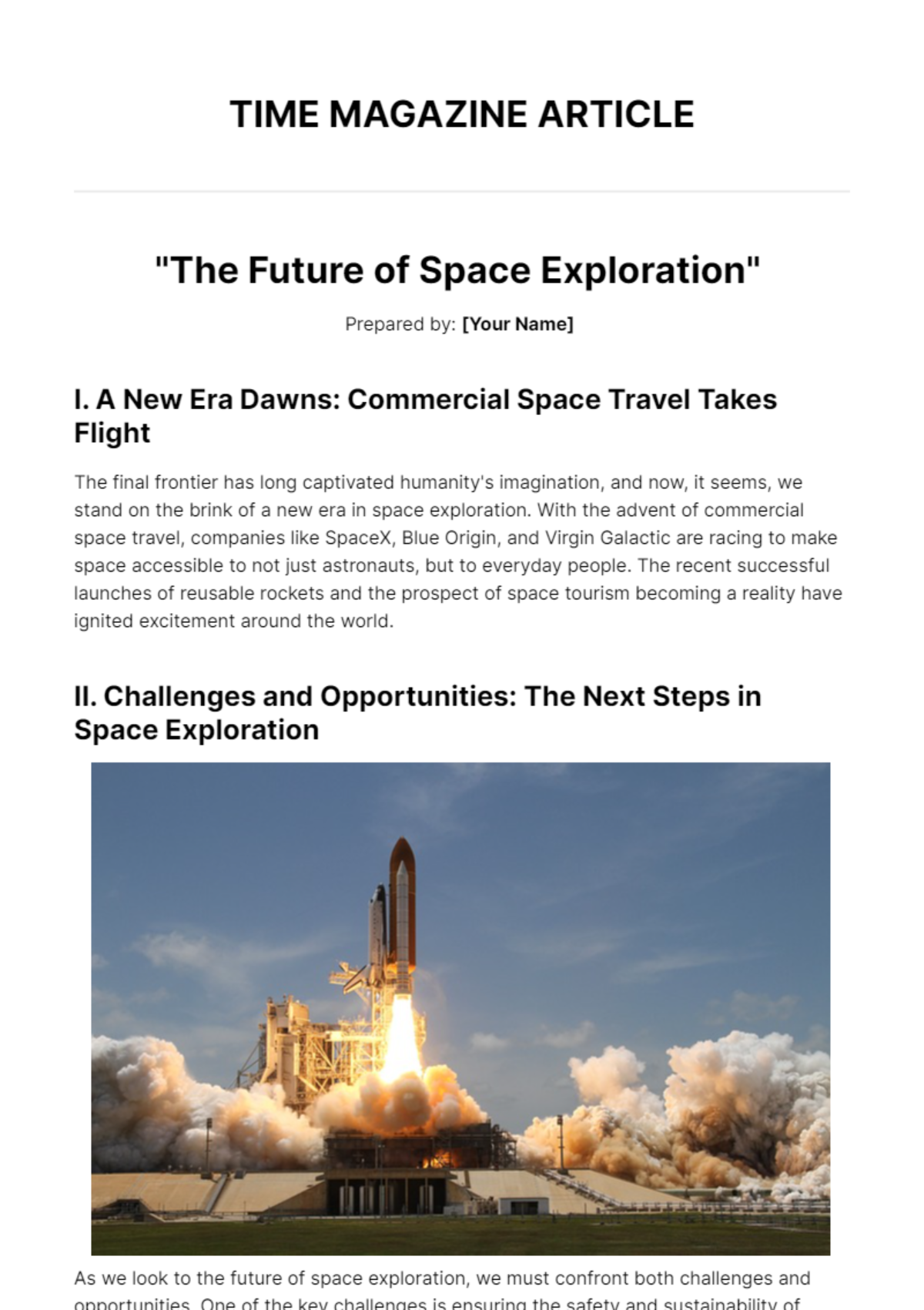Article Series in Magazine
Prepared by: [Your Name]
Date: [Date]
Article Series: The Future of Renewable Energy

Introduction
"Harnessing Tomorrow: An Introduction to the Future of Renewable Energy"
The renewable energy sector is rapidly developing, with groundbreaking technologies and innovative solutions transforming how we produce and consume power. This series will guide you through the latest advancements, policy effects, and future directions of renewable energy. We'll cover solar, wind, energy storage, and grid integration, providing insights from leading experts and case studies of pioneering projects.
Article 1: Solar Power Innovations
"Breaking New Ground: The Latest Advances in Solar Energy Technology"
Solar energy is at the forefront of the renewable revolution. Recent innovations include:
Perovskite Solar Cells: Offering up to 25% efficiency at a fraction of the cost of traditional silicon cells.
Bifacial Panels: Capturing sunlight on both sides for increased energy yield.
Floating Solar Farms: Installed on water bodies, reducing land use and cooling panels for better performance.
Expert Insight: Dr. Emily Carter from the Solar Research Institute explains, "Perovskite cells have the potential to drastically lower costs and expand solar energy adoption."
Article 2: Wind Energy Breakthroughs
"Catching the Wind: How Modern Turbines Are Revolutionizing Wind Power"
Wind energy technology is evolving rapidly with:
Horizontal-Axis Wind Turbines: Featuring longer blades and higher efficiency.
Vertical-Axis Wind Turbines: Offering potential for urban environments and low-wind areas.
Floating Wind Turbines: Positioned offshore in deeper waters, capturing stronger winds.
Case Study: The North Sea Wind Farm project is a prime example of large-scale offshore wind integration, with turbines generating enough power to supply over 1 million homes.
Article 3: The Rise of Energy Storage Solutions
"Power in the Bank: The Evolution of Energy Storage Systems"
Energy storage is crucial for balancing supply and demand:
Lithium-Ion Batteries: Widely used in electric vehicles and grid storage because of their high energy density.
Solid-State Batteries: Promising higher energy densities and safety improvements.
Pumped Hydro Storage: A mature technology using surplus energy to pump water uphill for later release.
Expert Insight: John Lee from Energy Storage Solutions says, "Solid-state batteries could be a significant change, offering both higher energy densities and increased safety."
Article 4: The Role of Policy and Innovation
"Fueling the Future: How Policy and Innovation Drive Renewable Energy"
Policy and innovation play a critical role:
Renewable Portfolio Standards (RPS): Mandate a minimum percentage of energy from renewable sources.
Carbon Pricing: motivates reductions in greenhouse gas emissions by putting a price on carbon.
Innovation Grants: Fund research and development of new renewable technologies.
Case Study: Germany’s Unrenowned policy has led to a dramatic increase in renewable energy generation, with renewables now accounting for over 40% of its electricity consumption.
Article 5: Integrating Renewables into the Grid
"Seamless Integration: Challenges and Solutions for Renewable Energy Grid Integration"
Integrating renewable energy into the grid involves:
Smart Grids: Use of digital technology to enhance grid reliability and efficiency.
Energy Management Systems: Optimize the distribution of energy from various sources.
Demand Response Programs: Adjust electricity consumption based on supply conditions.
Case Study: The California ISO’s grid modernization efforts include advanced forecasting and real-time grid management to handle high levels of solar and wind power.
Conclusion
"The Path Ahead: Summarizing the Future of Renewable Energy"
Our exploration of renewable energy has highlighted key advancements and future trends. Innovations in solar and wind technologies, combined with improved storage solutions and smart grid integration, are shaping a sustainable energy future. As we look ahead, continued investment in research and supportive policies will be crucial for driving further progress.
Supplementary Material
Interviews:
Dr. Emily Carter on solar technology.
John Lee on energy storage advancements.
Case Studies:
North Sea Wind Farm.
Germany’s Energiewende policy.
California ISO’s grid integration strategies.
Infographics and Data:
Efficiency comparisons of solar technologies.
Growth statistics for wind energy installations.
Energy storage capacity and market trends.



